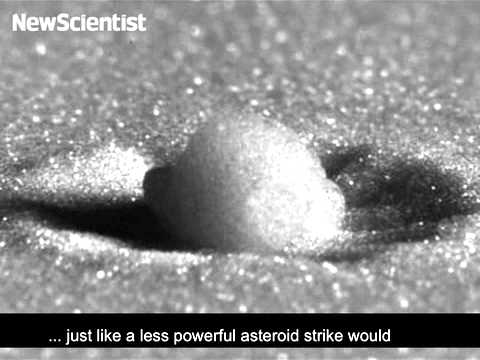A raindrop hitting sand may not make the deep impact of an asteroid strike, but crash tests are showing that they leave behind a similar crater.
Xiang Cheng from the University of Minnesota in Minneapolis and colleagues released drops of water onto a bed of tiny glass beads, varying the impact energy to observe the resulting mini-Armageddon.
The team was surprised to find that craters formed by liquids have the same shape as an asteroid strike. Their shape also varies with the strength of impact in the same way.
The real value of these results is how they help us understand splashing liquids – which are more of a mystery than collisions between solid objects. They could help us predict the effect of rain on soil erosion or design better drip irrigation systems.
Journal reference: PNAS, DOI: 10.1073/pnas.1419271112
